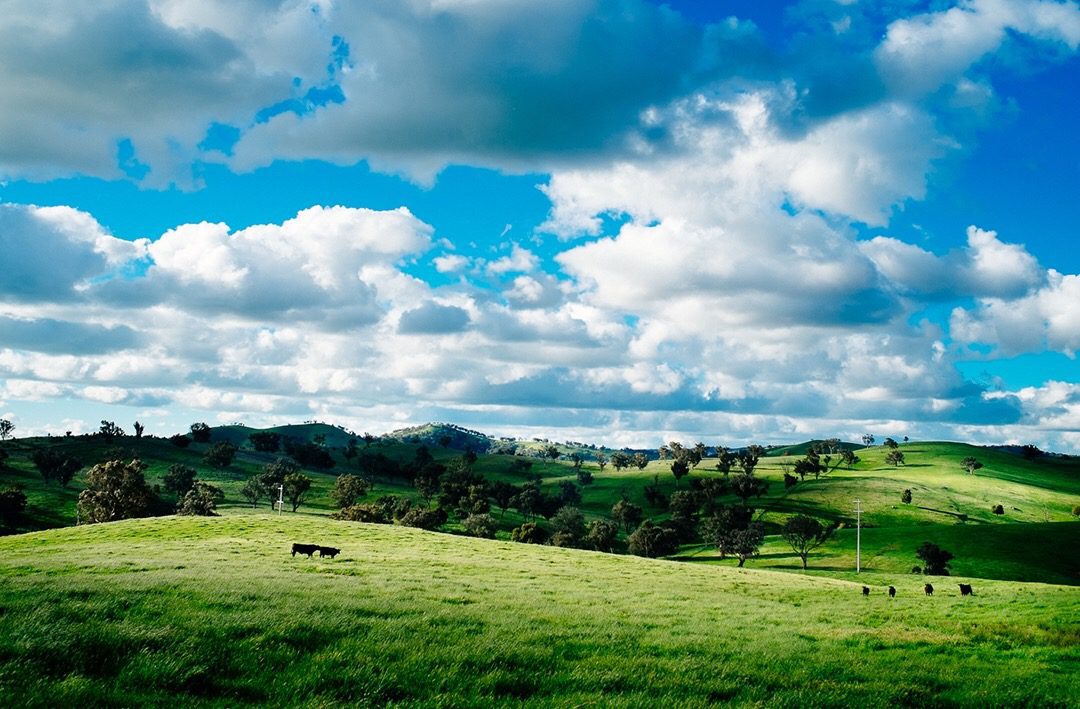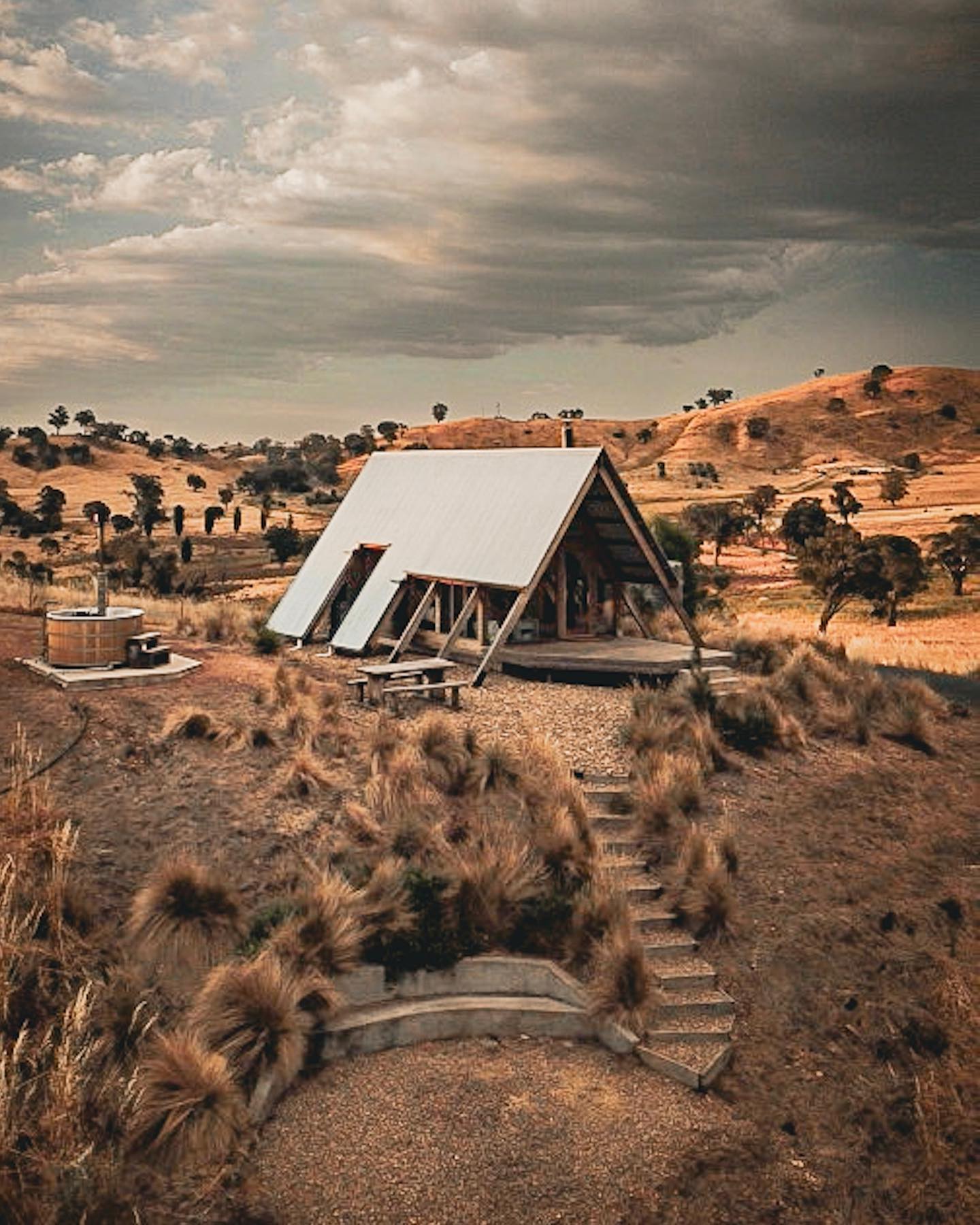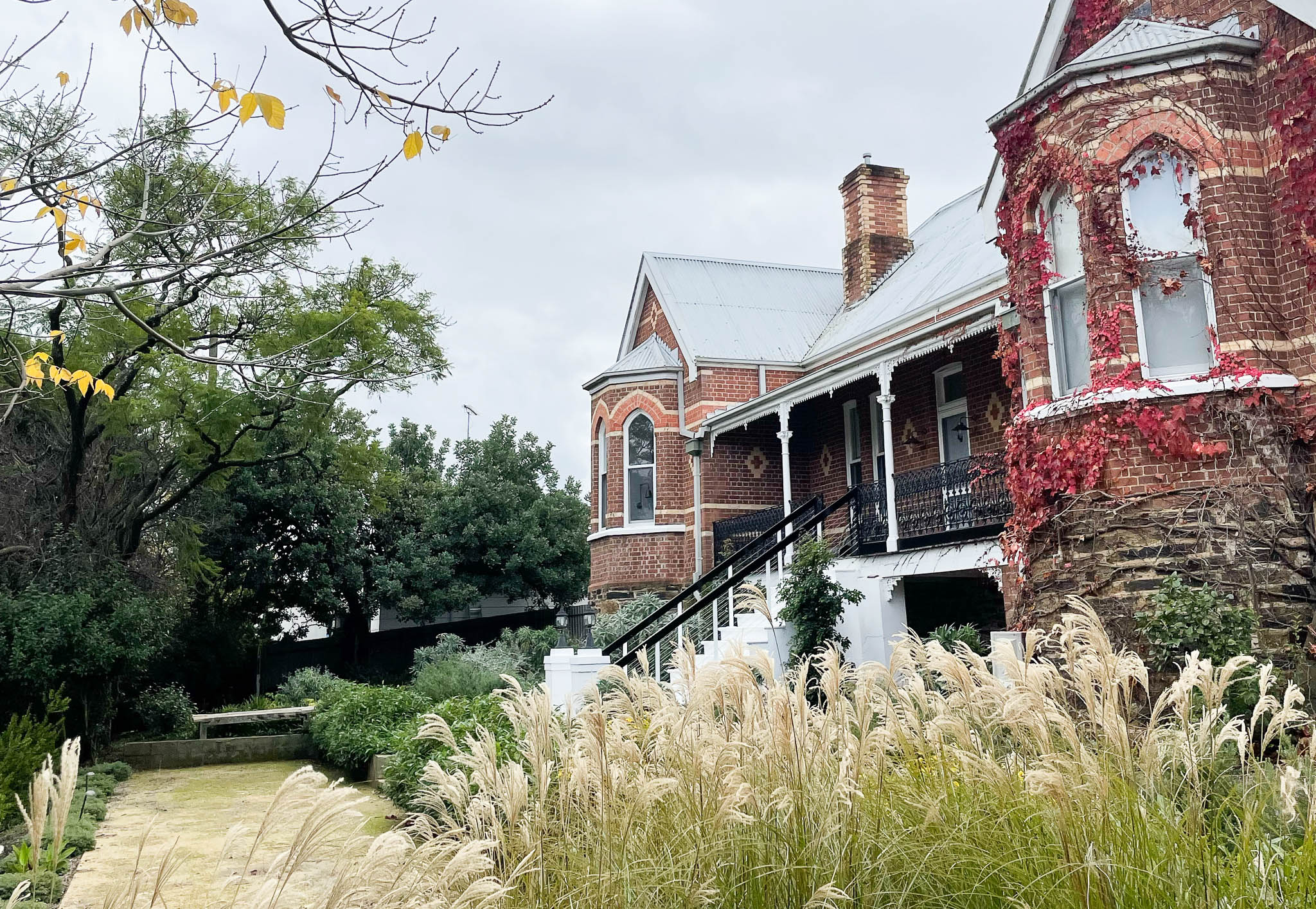Nestled in the picturesque landscapes of New South Wales, Australia, lies a town rich in history, folklore, and cultural heritage — Gundagai. Its serene beauty captivates visitors, the rich tapestry of stories woven into its past that truly enchant visitors. From the footprints of renowned figures like Herbert Hoover and Banjo Patterson, to stories such as Phar Lap’s saddle cloth. Gundagai invites exploration into its multifaceted past.
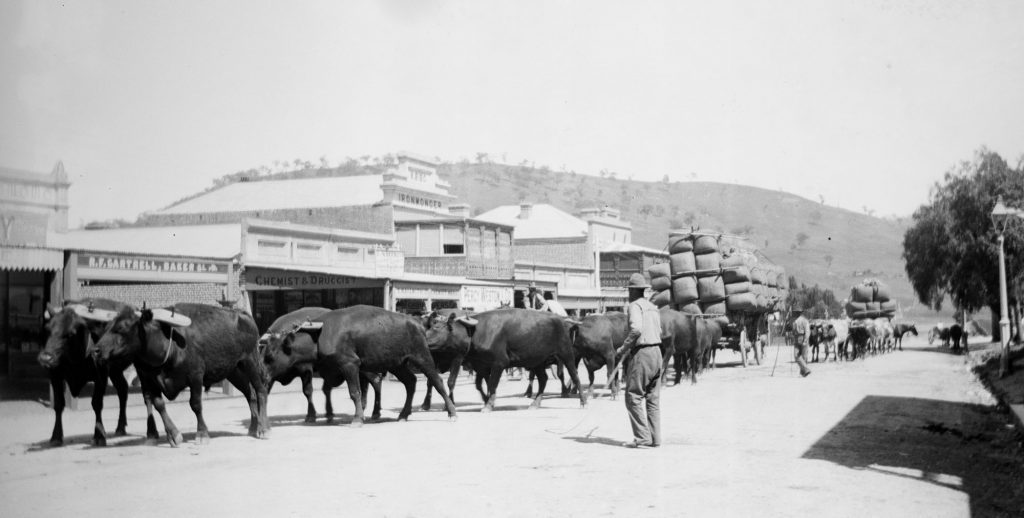
The Origins of Gundagai
Gundagai’s story begins long before European settlement. The Wiradjuri people were the original custodians of this land, weaving their traditions and wisdom into the fabric of the region. The name “Gundagai” itself is of Indigenous origins. It possibly means “cut with a hand-axe behind the knee.” Referring possibly refers to the bend in the Murrumbidgee River. The town’s location, at the crossing of the Murrumbidgee River. A significant meeting point for Indigenous tribes but also for European settlers.
Gold Fever Hits Gundagai
European settlement in Gundagai began in the early 19th century, spurred by the fertile land and access to waterways. Thus by the mid-1800s, the town had become a bustling hub for trade and transportation with the gold rush.
While not as renowned as other goldfields like Ballarat or Bendigo, Gundagai’s proximity to the Murrumbidgee River also its tributaries made it a promising site for gold prospecting. In the early 1850s, reports of gold finds in the surrounding areas began to circulate. This attracted eager fortune-seekers from far and wide.
As news of gold discoveries spread, Gundagai experienced an influx of prospectors, entrepreneurs, and settlers hoping to strike it rich. The town’s population swelled, makeshift settlements sprung up along the riverbanks and in the Hills (like Reno), and the bustling streets hummed with activity. Gold fever gripped Gundagai, fuelling dreams of wealth and prosperity. Gundagai once had 12 Jewellery shops in the Main Street, however Gundagai’s prosperity was not without its challenges….
Floods and Resilience:
One of the most defining chapters in Gundagai’s history is the series of devastating floods that struck the town, like the catastrophic flood of 1852. This event claimed hundreds of lives and left an indelible mark on the town’s psyche. Despite the destruction, Gundagai rose from the waters, displaying remarkable resilience and fortitude.
The Gundagai flood of 1852 is one of the most catastrophic natural disasters in Australian history. In terms of loss of life relative to the size of the community at the time. This event stands out not only for its immediate impact but also for the long-term changes it prompted. Changes in settlement patterns and flood management in the region ensued.
Background
Gundagai is located on the floodplain of the Murrumbidgee River in New South Wales and established in the 1830s. Despite the area being prone to flooding, the town was initially built on the low-lying flats of the river. It’s easy immediate access to water and fertile land for agriculture drawing the settlers in.
The Flood of June 1852
In June 1852, after several days of heavy rain, the Murrumbidgee River began to swell rapidly. Soon after breaking its banks and inundating the town of Gundagai. The floodwaters rose with unprecedented speed and ferocity, catching many residents off guard.
Impact and Loss
The flood was devastating. Around 89 people, out of a population of approximately 250, lost their lives in the flood. This represented about one-third of the town’s population. Making it the deadliest flood in Australian history in terms of numbers and moreover the proportion of the population affected. The floodwaters swept away entire buildings, homes, and livestock, leaving little behind. The infrastructure of the young settlement was entirely destroyed.
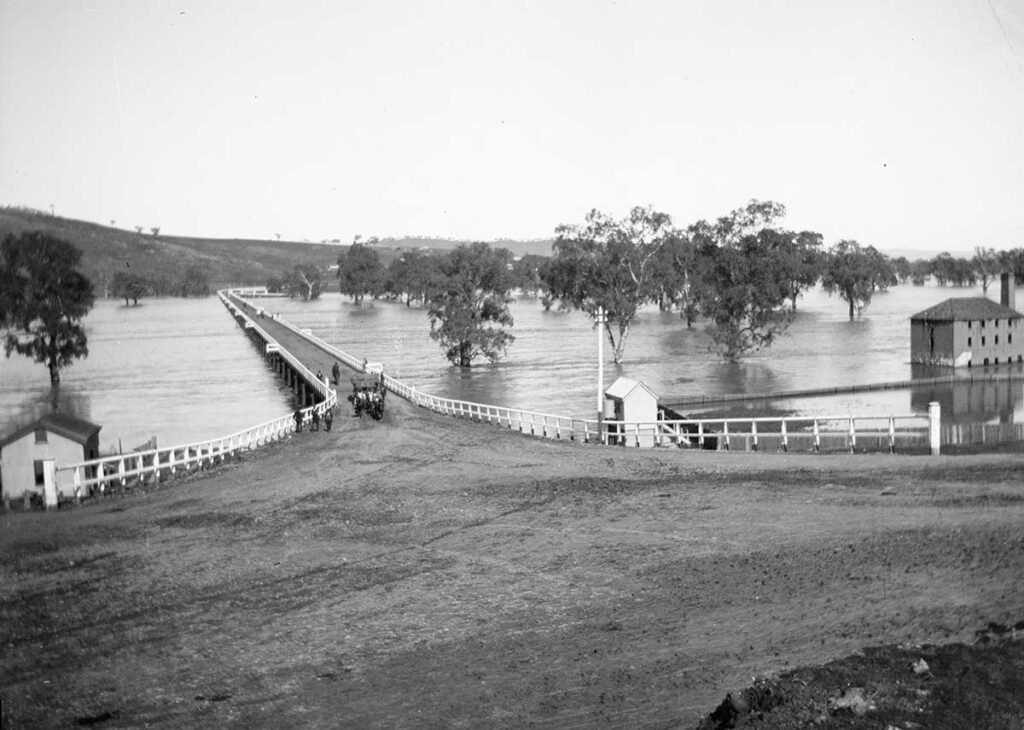
Heroism and Survival
Amidst the tragedy, there were also incredible acts of bravery and survival. Local Heroes Yarri, Jacky Jacky, Long Jimmy, and other Wiradjuri men, using their bark canoes, rescued over 40 settlers from the rooftops and debris in the floodwaters. Their knowledge of the river and canoeing skills were crucial in saving many lives. The survivors, despite the immense loss, showed remarkable resilience in the aftermath, coming together to rebuild their lives and community. This is a legacy that still lasts today in the hearts and minds of the local population.
Aftermath and Changes
The flood had long-lasting effects on Gundagai and the wider region. Recognising the vulnerability of the original site, the town was subsequently rebuilt on higher ground. Moving away from the immediate risk of flooding. This move likely saved many lives in later years. The Murrumbidgee River would flood again, but with less impact on the relocated township. The disaster also highlighted to authorities, the need for better understanding and management of flood risks in Australian settlements. Leading to changes in town planning and building, particularly in flood-prone areas. Forevermore influencing policies and practices in flood management and town planning across the country.
Legacy
The 1852 flood remains a significant part of Gundagai’s history and Australian natural disaster lore. Thus serving as a stark reminder of the power of nature and the importance of respecting and adapting to the environmental conditions of an area. The heroism displayed during the flood by the Wiradjuri people is forever remembered. A bronze statue in the Main Street remembers the strength and indeed the unity of the Gundagai community.
A US President was a Gundagai Resident
Gundagai’s colourful array of past residents during this time included Herbert Hoover. Mr Hoover resided in Gundagai during his early years, long before his ascent to the presidency of the United States. After studying mining engineering at Stanford University, he embarked on a career in the mining industry. As chief engineer of the Prince of Wales mine at Reno. Hoover was a young man seeking to make his fortune. There are stories of a young woman who considered herself engaged to Hoover but as the yarn goes…. she was engaged to many others also.
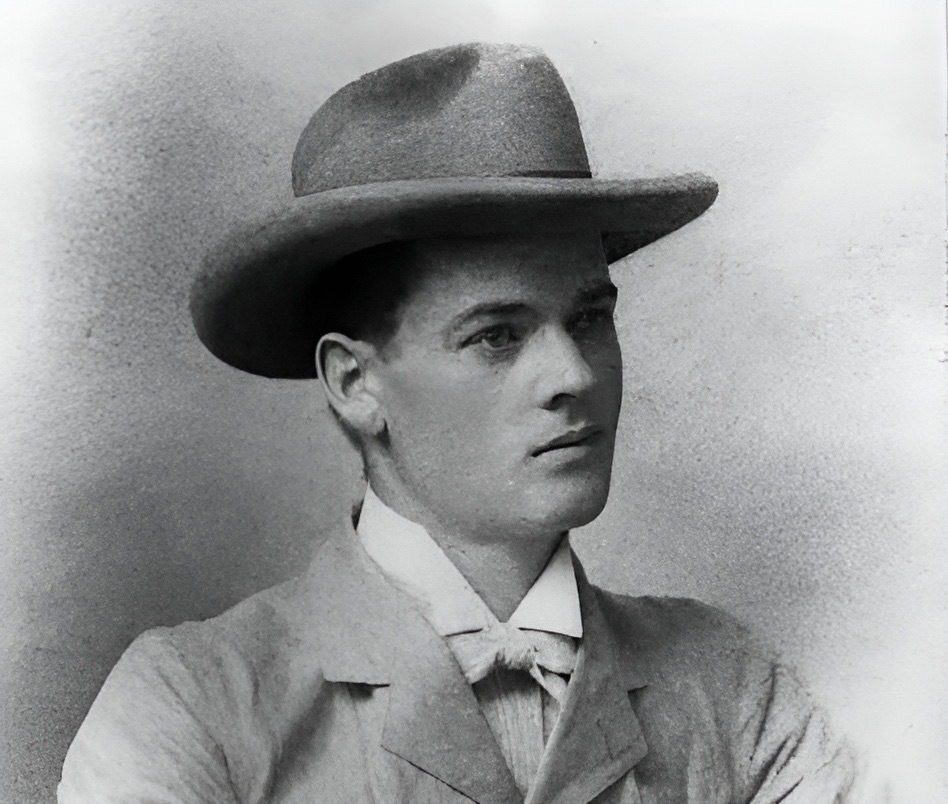
After leaving Australia, Hoover continued his career in mining, eventually becoming a successful businessman. He went on to serve as the Secretary of Commerce under Presidents Warren G. Harding and Calvin Coolidge before winning the presidency in 1928. Hoover’s presidency was marked by the onset of the Great Depression, he served one term in office from 1929 to 1933.
Cultural Treasures of Gundagai
Gundagai’s cultural heritage is preserved in its museums and landmarks. These quaint relics offer a treasure trove of artefacts and stories. Among these is Phar Lap’s last ever saddle cloth…
Phar Lap’s Saddle Cloth at the Gundagai Museum
James Robinson (of Kimo Estate) and his syndicate, was instrumental in negotiating the return of Phar Lap’s body from the United States to Australia.
The significance of Phar Lap to Australian racing and cultural heritage is enormous. Noticing this significance, James Robinson and his associates successfully arranged for Phar Lap’s body to be returned to Australia. The syndicate covered the costs involved in transporting the body back to its homeland. The Saddle cloth, received by James has been donated to the Gundagai Museum where it still sits today.
Rusconi
Another cultural gem is the work of Giuseppe (Joe) Rosconi, a master marble sculptor whose creations adorn Gundagai’s landscape. Rosconi’s intricate sculptures, including the renowned Dog on the Tuckerbox, capture the essence of Gundagai’s spirit. It also serves as an enduring symbol of its identity.
Giuseppe Rosconi (Joe), an Italian-born master marble sculptor renowned for his exquisite craftsmanship and contributions to art and architecture. Born in Carrara, Italy, Rosconi honed his skills in the renowned marble quarries of his homeland before making his mark on the world stage, including his notable work in Westminster Abbey.
Westminster Abbey‘s link to Gundagai
One of Rosconi’s most celebrated achievements was his involvement in the restoration and embellishment of Westminster Abbey in London, England. Westminster Abbey, a UNESCO World Heritage Site and one of Britain’s most iconic religious landmarks, boasts a rich history dating back over a thousand years.
Rosconi’s craftsmanship graces Westminster Abbey in the form of intricate marble sculptures and architectural elements. His work can still be seen at the abbey. Rosconi’s contributions to Westminster Abbey exemplify his mastery of marble sculpting and his ability to enhance the beauty and grandeur of historic structures.
Work in Marble Mines
Before his illustrious career in Europe and beyond, Rosconi gained invaluable experience working in the marble quarries of Carrara, Italy. Carrara, renowned for its high-quality marble, is a fitting birthplace for such a man. Rosconi’s time in the marble mines honed his expertise in working with this exquisite material, laying the foundation for his future success as a sculptor.
The Marble Masterpiece
Rusconi’s Marble Masterpiece was intended to showcase the diversity and beauty of New South Wales marble, effectively serving as a unique cathedral-in-miniature. The Marble for his masterpiece was collected from various mines around Australia. Remarkably, Rusconi completed this intricate work without any known plans or drawings, relying solely on his sight and skill. This fact underscores his exceptional talent and the artistic value of the Marble Masterpiece.
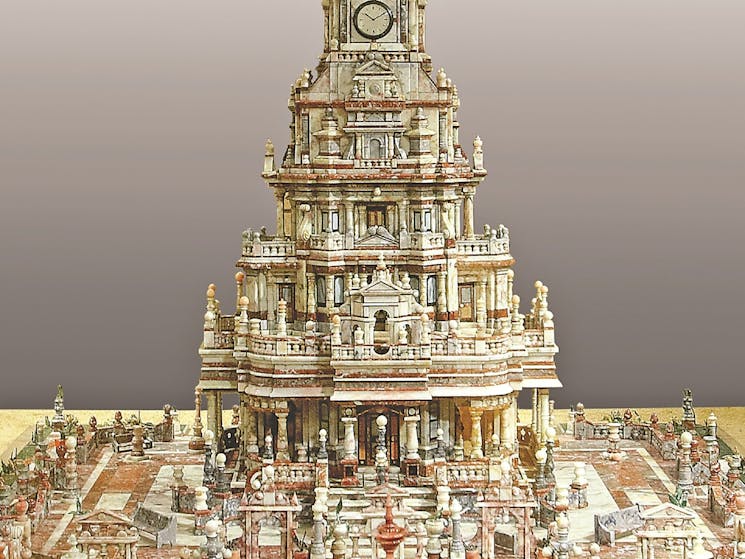
The Dog on the Tuckerbox
One of Rosconi’s most enduring legacies is his creation of the Dog on the Tuckerbox monument, located in Gundagai, New South Wales, Australia. Commissioned in the 1920s, the monument commemorates the pioneering spirit of the region and has become an iconic symbol of Gundagai.
The creation of the Dog on the Tuckerbox monument was a monumental undertaking that showcased Rosconi’s unparalleled skill and dedication. Working with Carrara marble imported from Italy, Rosconi meticulously sculpted the intricate details of the monument, including the faithful dog perched atop a tuckerbox. The monument stands as a testament to Rosconi’s artistic vision and craftsmanship, enduring as a beloved landmark and cultural treasure in Gundagai.
Rosconi’s journey from the marble quarries of Carrara to the hallowed halls of Westminster Abbey and beyond exemplifies the power of art to transcend borders and enrich lives. His legacy lives on through his masterful works, which continue to inspire and awe audiences around the world.
Agriculture and Gundagai: through it all…
By the mid-1800s, Gundagai became a significant agricultural hub, with sheep and cattle grazing being predominant. The discovery of gold in the area in the 1850s temporarily shifted the focus from agriculture, attracting a surge of prospectors. However, agriculture remained a staple of the region’s economy, with many miners eventually turning to farming as the gold rush waned.
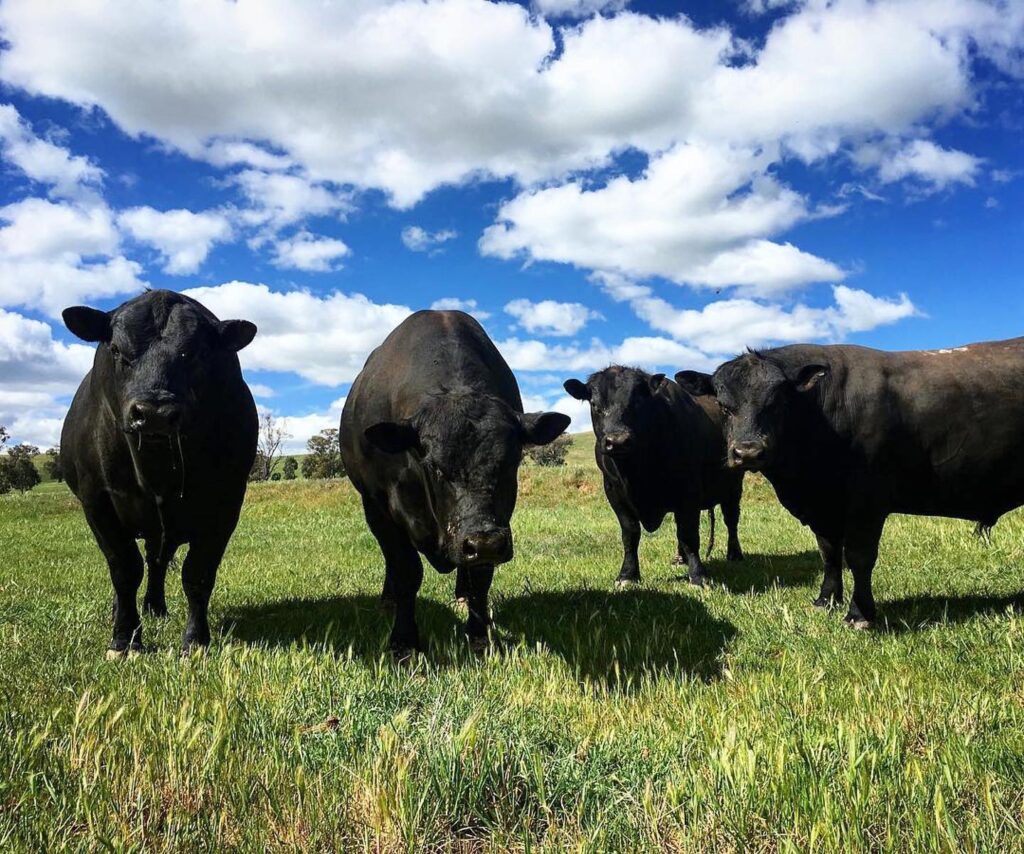
Livestock
Livestock farming has long been a cornerstone of Gundagai’s agricultural sector. The region is renowned for its sheep and cattle farming, with sprawling pastoral properties dotting the countryside. Sheep grazing on lush pastures and cattle roaming verdant hillsides are common sights, reflecting Gundagai’s heritage as a hub for wool and beef production.
Wool Production
Gundagai has a storied history in wool production, dating back to the early days of European settlement. The town’s fertile grazing lands and favorable climate provide ideal conditions for sheep farming, making it a prime location for wool growers. The wool industry has played a significant role in Gundagai’s economy, with local farmers contributing to Australia’s reputation as a leading producer of high-quality wool. The Macquarie family (as in Governor Macquarie) also trialed Merino’s at Nangus Station making them possibly the 2nd flock of Merinos in Australia. A sheep that made Australia a very rich place in the wool boom years.
Crop Farming
In addition to livestock farming, Gundagai’s agricultural landscape also supports crop cultivation. The region’s fertile soils and temperate climate allow for the growth of a variety of crops, including grains, legumes, and fodder crops. Farmers in Gundagai cultivate crops such as wheat, barley, oats, and canola, contributing to both local food production and broader agricultural markets.
Viticulture
In recent years, Gundagai has emerged as a burgeoning wine region, with vineyards taking root in the surrounding hillsides. The region’s climate and unique terroir provide ideal conditions for grape cultivation, resulting in wines of exceptional quality and character. Gundagai’s wineries offer visitors the opportunity to sample a diverse range of varietals, showcasing the region’s potential as a premier wine destination.
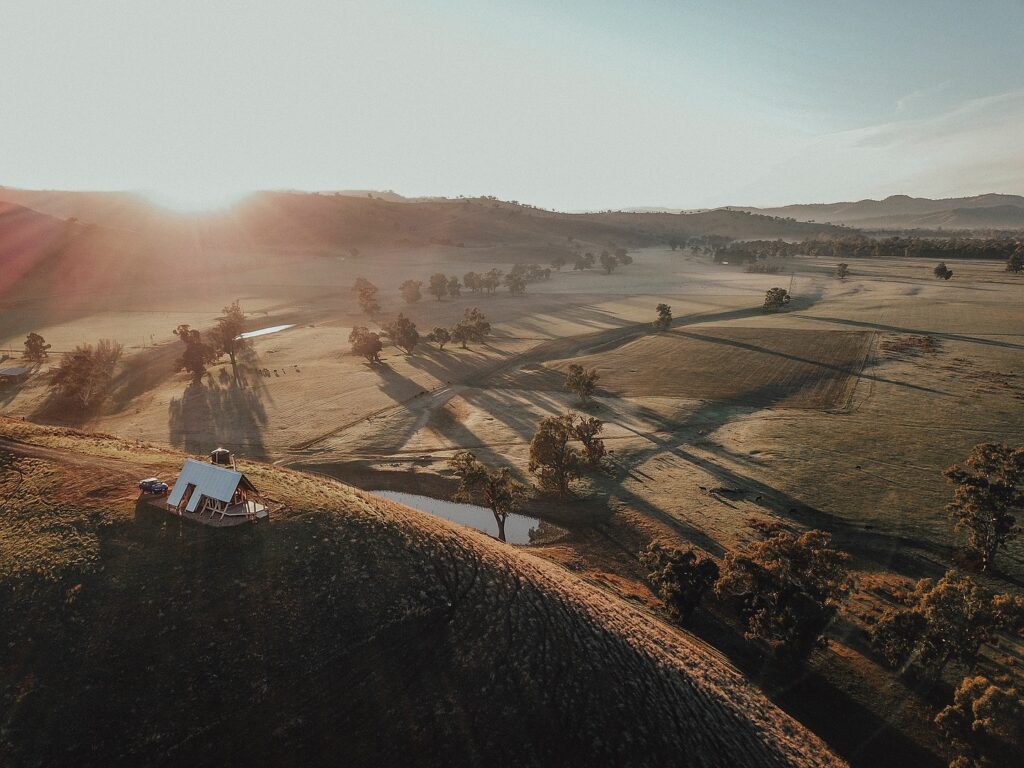
Today and Tomorrow, What’s In Store for Gundagai…
While no one knows where things are going, Gundagai sits in a very strong position to add to it’s long history, several opportunities present themselves to the region.
Gundagai should see an increase in the variety of agricultural products, including niche markets such as organic produce, specialty grains, or vineyards, which have been gaining popularity in various regions of Australia. The fertile soils of the river flats can grow almost anything and are currently under-utilised.
The extreme natural beauty of the Gundagai region, with its rolling hills, rivers, and scenic landscapes, is ideal for nature-based tourism. Activities like hiking, fishing, camping, and wildlife observation can be further developed to attract outdoor enthusiasts.
Combining agriculture and tourism, agritourism offers visitors a chance to experience farm life, participate in agricultural activities, and learn about local food production. Farm stays, wine tasting tours, and farmer’s markets, providing an additional income stream for local farmers and a unique experience for tourists.
And the Elephant in the room – The trend of tree changers, the affordability of housing and the rise of remote work opportunities should contribute to population growth and economic diversification in Gundagai. This demographic shift, has and is likely to further spur on development of new businesses, attractions, services, and community initiatives catering to both residents and visitors. Therefore growth of this pretty little town halfway between Melbourne and Sydney seems inevitable. It’s just a matter of time….

